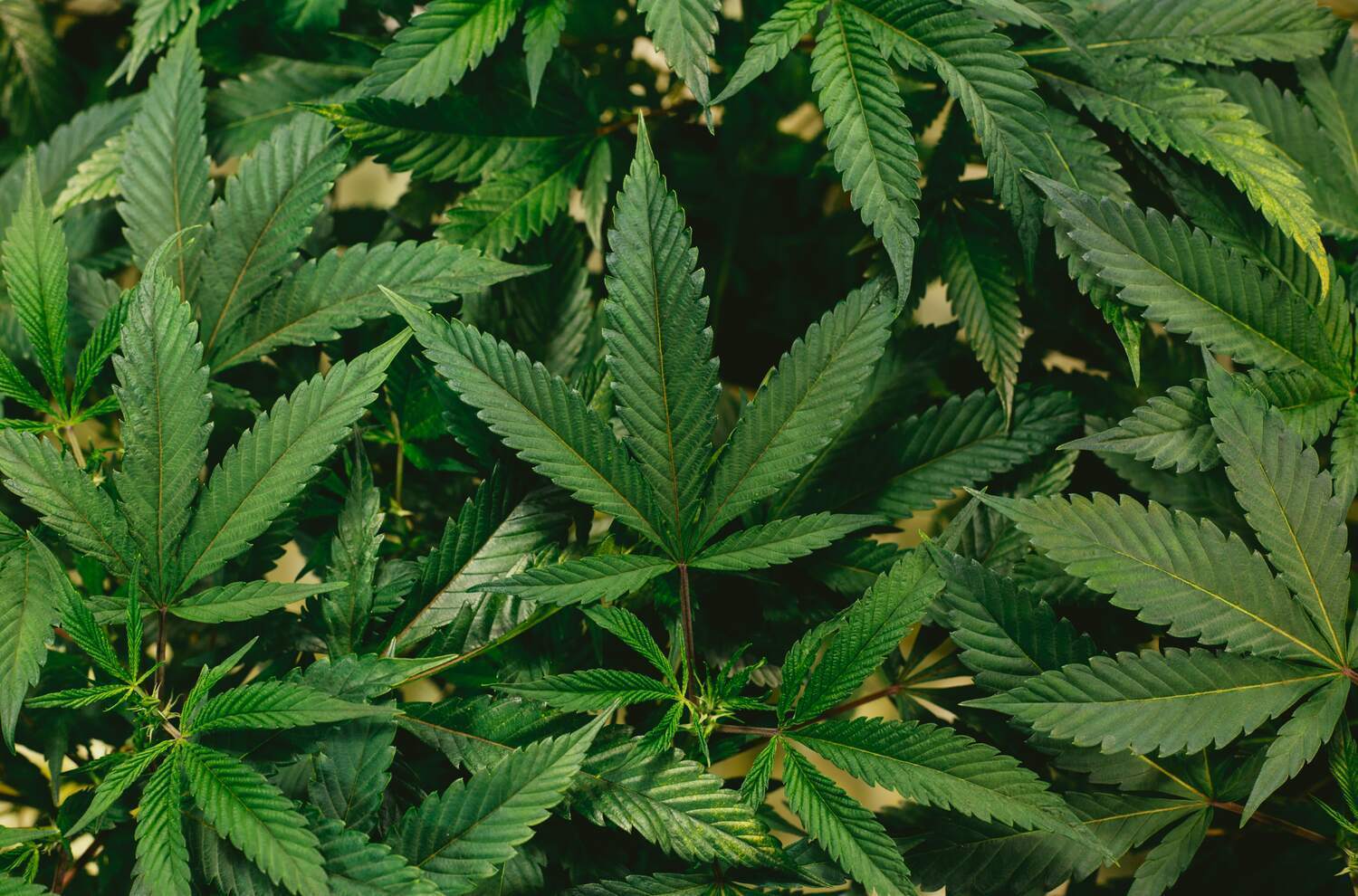The CBD industry is filled with terminology that might not be understood by the average person. When it comes to CBD definitions, we’re hoping to spread awareness about what certain words mean and how to use them properly. We invite you to follow along as we take a deeper look at cannabis definitions you’re likely to find on our website and throughout the industry.
Blunt
Cannabis that’s wrapped in either a tobacco leaf cigar or a cigarillo paper. Blunts are a preferred smoking method by some as they last longer and provide users with nicotine.
Bong
A large pipe that incorporates water to help diffuse cannabis smoke as you inhale.
Bowl
A glass pipe that’s used to inhale cannabis flower.
Broad-Spectrum
An extraction type that contains a wide range of cannabinoids and other phytonutrients. However, this extraction specifically doesn’t contain tetrahydrocannabinol (THC) – making broad-spectrum CBD products THC-free.
Buds
A cannabis bud is the flower of the plant which is what’s primarily used in cannabis products. Buds contain the highest concentration of cannabinoids (such as THC and CBD).
Cannabinoids
Cannabinoids are chemical compounds found in both the cannabis plant and in humans. When referring to cannabinoids in cannabis, they’re sometimes called phytocannabinoids. When referring to cannabinoids found in humans, they’re sometimes referred to as endocannabinoids. Cannabis is best known for its cannabinoids THC and CBD.
Cartridges (Carts)
A vape cartridge is a device used to inhale cannabis through vaporization. The cartridge itself sometimes comes preloaded with cannabis e-liquid, or it can be added afterward. Vape cartridges come in different variations in order to accommodate different vape pens.
CBD
CBD is the abbreviated title for cannabidiol. It’s one of over 100 cannabinoids found in the cannabis plant and has recently garnered much popularity due to its potential health benefits. While research is still preliminary, you may be able to use CBD for anxiety, inflammation, pain, and seizures.
CBG
CBG is the abbreviated title for cannabigerol. It’s another cannabinoid from the cannabis plant that strengthens the function of the neurotransmitter anandamide. In turn, CBG may be able to help regulate sleep and appetite, increase pleasure and mood, and relieve pain.
CBN
CBN is the abbreviated title for cannabinol. This cannabinoid is often toted for its sleep-inducing effects – however, there isn’t enough research to confirm you can use CBN for sleep. Still, many CBN products are hitting store shelves to help with sleep disorders, from oils to gummies.
Certificate of Analysis (CoA)
Since cannabis products aren’t regulated by the Food and Drug Administration (FDA), reputable companies have taken it under their own belt to ensure quality and safety. They do so by running their products through a third-party lab test. In turn, they’ll receive a certificate of analysis (CoA) that will identify the purity of the CBD, the extraction’s cannabinoid profile, and whether or not a product has contaminants.
cGMP
cGMP refers to Current Good Manufacturing Practice regulations – a set of standards enforced by the FDA to ensure technology and systems are both up-to-date and practiced in a safe environment.
Concentrate
When cannabis is dissolved into a solvent, its cannabinoids become a potent consolidation known as concentrates. This term is used to refer to oils, waxes, and shatter – all of which contain extremely potent levels of specific cannabinoids.
Dab (Dabbing)
Dab is a slang term used to refer to cannabis concentrates that are inhaled through a heated surface.
Delta-8 THC
Delta-8 tetrahydrocannabinol (THC) is a synthetic cannabinoid made from CBD. Since it’s made from the hemp plant, it’s technically legal, but a number of states are actively working to restrict it as it does cause psychoactivity. Still, many companies have been releasing delta-8 THC products.
Dispensary
A dispensary is a term used for stores that sell cannabis products. If you live in a state where medicinal or recreational cannabis is legalized, dispensaries are licensed facilities that are legally allowed to sell cannabis products to patients and consumers.
Edibles
An edible good is something you can eat that’s infused with cannabis. This most commonly refers to baked goods, such as brownies and cookies. However, it can refer to any cannabis products that are consumed through the digestive system, such as CBD gummies and tinctures.
E-Liquid
E-liquids (sometimes referred to as e-juices or vape juices) are liquid used inside electronic vaporizers (electronic cigarettes). While they typically contain nicotine, many CBD e-liquids have recently hit shelves that can be used as a way to inhale cannabidiol. E-liquid can be made in a variety of manners, but usually uses propylene glycol (PG), vegetable glycerin (VG) or glycerol, and other chemicals (such as flavorings).
Extraction
In order to get CBD (or other cannabinoids) into a product, it must be extracted from the cannabis plant. This can be done in a variety of different manners, including CO2 extraction and extraction by solvents. Through the extraction process, companies can develop three different types of CBD products: full-spectrum, broad-spectrum, and isolate.
Feminized
Cannabis plants come in two different sexes: male and female. However, female plants are the only ones that produce buds – the main ingredient in cannabis products. Therefore, to make it easier on growers, distributors will sell feminized seeds in order to ensure you’re only receiving quality cannabis.
Flavonoids
As of now, 20 different flavonoids have been discovered within the cannabis plant. However, they exist among a wide range of different plant species. They are secondary metabolites that play an essential function in cell cycle production. Not to mention, some research has found they have a number of health benefits and nutrient properties.
Flower
Cannabis flowers are the buds of a plant that are used for products. Beyond holding the highest concentration of cannabinoids, they’re also the plant’s reproductive organ. Traditionally, people smoke cannabis flowers in order to receive a “high.” In recent years, CBD flower (hemp flower) has become a popular way to consume cannabidiol.
Full-Spectrum
An extraction type that contains all of the cannabinoids and other phytonutrients found in the hemp plant. Under federal law, full-spectrum CBD products must contain less than 0.3% THC.
Hemp
The hemp plant is essentially the cannabis plant with the only difference being it contains a high concentration of CBD and a low concentration of THC. More specifically, a cannabis plant cannot legally be defined as hemp unless it contains less than 0.3% THC. In terms of the federal CBD market, all products must be made from the hemp plant.
Hybrid
When a cannabis plant is genetically crossed between two different strains, it’s considered a hybrid. This term is often used to define cannabis flower that contains both indica and sativa. However, as long as the plant incorporates two different strains, it’s a hybrid. Most cannabis on the market today are hybrids and either indica-dominant or sativa-dominant.
Indica
Cannabis indica is a species of cannabis that has shorter, bushier buds. Compared to other species of cannabis, indica tends to cause relaxation and sedation.
Isolate
When a cannabinoid is extracted and placed in a product on its own, it’s considered an isolate. For example, you may run across CBD isolate products, such as those offered by Infinite CBD. However, beyond extraction, an isolate may also refer to a powder, crystalized product that’s pure CBD (or any other cannabinoid).
Joint
A joint is essentially a marijuana cigarette. Most people purchase “joint papers” themselves and roll up a cannabis joint when they please. However, you can also purchase pre-rolled joints at dispensaries.
Kratom
Kratom is a plant indigenous to Southeast Asia that’s been found to have both pain-relieving and mood-improving qualities. Kratom products come in various forms, from powders to teas to capsules. If you’re interested in purchasing these products, you can check out our kratom reviews. Though, it should be noted that kratom isn’t legal everywhere in the United States.
Marijuana
Marijuana is a general term used to describe the female cannabis plant. Nowadays, marijuana is used as a way to differentiate from hemp plants. In other words, marijuana products contain higher concentrations of THC and therefore, will cause psychoactivity.
Medical
Medical cannabis is used to define a product that’s been legalized for medicinal use. Essentially, medical cannabis products are the same as recreational cannabis products. However, you must receive a doctor’s permission in a legalized state in order to obtain these products.
Pre-Roll
A pre-roll is a cannabis joint that’s already been rolled.
Recreational
Recreational (sometimes referred to as adult-use) cannabis is when a state legalizes cannabis products to anyone over the age of 21. Therefore, it’s used for recreational purposes rather than medicinal. Since CBD is federally legal, it can be viewed as a recreational product with potential medical value.
Sativa
Cannabis sativa is a species of cannabis that has taller buds with a lighter color. Compared to other species of cannabis, it tends to produce more creative and energized effects.
Shatter
Shatter is a term used to describe butane hash oil (BHO). It’s usually consumed in a dab rig and has a glassy appearance.
Strain
The cannabis plant comes in a variety of different strains, each of which produces slightly different effects. This is usually due to the cannabinoid, terpene, and flavonoid profile of the strain. Not to mention, each strain has a slightly different appearance and aroma. Strains are typically after breeders who create them.
Terpene
Terpenes are a chemical compound found in the cannabis plant that is responsible for its aroma, flavor, and coloring. Beyond this, terpenes have also been found to have potential health benefits when consumed by people. While a cannabis strain is largely determined by its cannabinoid profile, its terpene profile plays just as important of a role.
THC
THC is the abbreviated title for delta-9 tetrahydrocannabinol. THC is known for its psychoactive effects (the “high”) and is one of the most abundant cannabinoids found in the cannabis plant. Recently, other forms of THC have appeared on the market that has similar effects, including delta-8 THC and delta-10 THC.
Tincture
A tincture (sometimes referred to as oil) is a concentration of herbal extract. In the CBD industry, CBD oils have become extremely popular as they provide an effective way to consume cannabidiol while also making it easy for consumers to measure out their dosage. Tinctures can come in a variety of flavors and can be mixed into drinks or other edibles.
Topical
Cannabis topical products are when cannabis extracts are added to products that are placed onto the skin, such as creams and lotions. Since topical products allow you to target specific areas of the body, they may be more useful for certain health conditions, such as muscle and joint pain.
Vape (Vaporizer)
A vaporizer (sometimes referred to as a vape) is a device used to consume cannabis e-liquids. Since studies have shown that vaping is healthier than smoking, some prefer to consume cannabinoids in this way. For example, vaping CBD has recently garnered some popularity.
Wax
Wax is a term used to refer to concentrates. It’s typically used in a dab pen and comes in both THC and CBD forms.

